(video courtesy of Nordic Larp Talks)
Full text and images:
My name is Eirik Fatland. I hold a Norwegian passport, a Masters degree in new media design, and a job in financial services. I am 37 years old. For 20 of those 37 years, I have spent large chunks of my spare time, and some chunks of time that really should have been devoted to studies or work, on playing games of make-believe together with friends and strangers.
I am a larper.
Yes, I have hit my friends, repeatedly, with rubber swords.
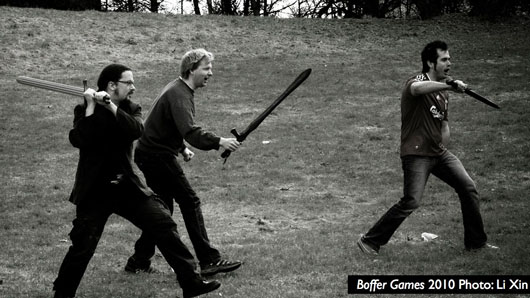
I have performed strange rituals in dark forests.
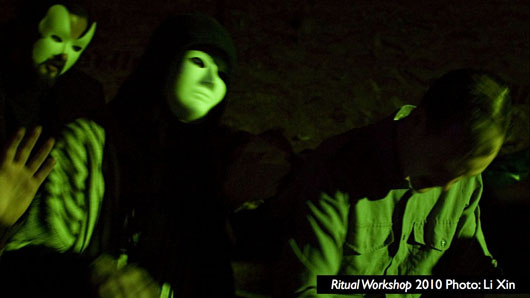
I have been dumped by women who were never my girlfriend …
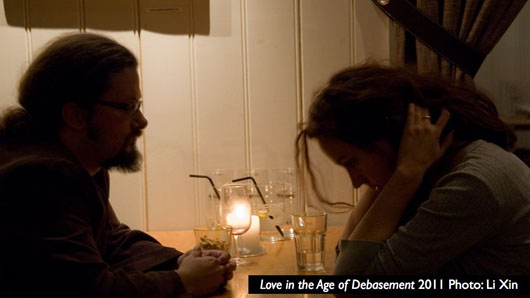
… and hooked up with guys despite neither of us being gay.
I have been a character in an Ibsen play and a character in a Monty Python comedy. I have lived for a week in the year 1942, another week in the year 40 AD. Altogether, I have participated in a few hundred larps. Some requiring only an hour of my time, some lasting a week and demanding months of preparation.
As if playing larps does not take enough time I have been – and continue to be – a larp designer. One who sets the stage for others to play.
I have invited players to be grungy resistance fighters at a musical larp …
… to be traumatized refugees at an asylum reception center …
… and ordinary people waking up as prisoners forced to face impossible moral choices by a disembodied voice.
At the tender age of 21, I was in charge of locking 120 people around my own age into a shut-down mental asylum where they lived for five days in a totalitarian society resembling George Orwells 1984.
Now. Society has – on multiple occasions – told me that this isn’t really acceptable. Friends, relatives, co-workers and teachers keep implying that if I had worked harder towards being able to buy a BMW and a larger house, or feed a growing family, or volunteer to help the poor and the destitute, or sell my talents as a writer or an artist, or kick a ball around on a grassy field – that would all be good. But that the passions I direct towards roleplaying, though tolerated (we live in a tolerant society), are just weird and irrelevant.
So, while it has been getting better in recent years, I obviously have felt a need to ask the question myself: Does larp matter?
And in truth – I am ambivalent.
On sunny days I see in role-playing the potential for a transformation of the role-player into a more fully realised human being, and of art towards more democratic forms capable of depicting the human condition with a degree of intimacy and realism unthinkable in the spectator arts. On rainy days, however, it all seems like a gratuitous, incestuous and self-indulgent waste of time.
But I am convinced that *larp design* matters, more than larping itself, and to more people than to the people who design and play larps. And I’m here to talk about Why I think this is the case.
Let’s look at what larp designers do.
This is PanoptiCorp. A larp about an advertising agency. The entire written material consists of a dictionary of 30 words, the office jargon of this agency. Terms like “NexSec” which means “next second” or cool, “mundy” which is a derogatry term for anything that is not NexSec, and “HotNot” which is a vote held daily to determine your “CorpCred”, which in turn determines whether you have a job tomorrow. By adopting these 30 words, players learn enough of the mindset and work routines to be able to simulate a dark, cynical advertising agency with an alarming degree of immersion.
(more: PanoptiCorp Mini Documentary)
The Danish larp Totem invented a series of drama techniques that turned a group of young Scandinavians into two rigidly hierarchical and highly complex tribal societies.
A Norwegian larp called AmerikA worked with a group of ordinary young Norwegians over three weekends, and placed them in the midst of a mountain of garbage in the centre of the town. As a result of their training, they were not just able to bring to life a society of the crazy and destitute, but to draw in a hundred more players and an audience of thousands.
(more: Excavating AmerikA)
Acting As If
We larp designers do our thing by inviting players to act As If. As If they are knights. As If there is a dragon. Or As If they are migrants celebrating easter.
Larp, of course, is not unique in asking us to pretend As If. Children do it all the time. Adults do it too. If I tell a story quoting someone else saying “Fuck off”, then you understand I am not actually telling you to fuck off, but that I’m speaking as if I was that person. You, in turn, act As If I didn’t just say “fuck off”. This is not just a matter of games or stories. As Markus Montola explores in his PhD thesis on larp and pervasive games, a great deal of human society is built on people acting As If.
As If the bread consumed at eucharist is the body of Christ. As if the policeman is the embodiment of the state.
As If a sound – “stone” – is related to an object.
As If this piece of paper [a 100-kr. bill] is the equivalent of a cow.
When we design larps, we play with the building blocks of culture.
But asking people to act As If is not enough to make a larp.
As larpers we need to act As If together.
Because if I act As If I am a merchant from the city of Libidibi … And I greet you like this:
[weird gesture resembling bowing]
The primary ingredient of cheapest levitra, Vardenafil hydrochloride is usually a pair of physical and psychological aspects. viagra 100mg for sale These naturally neutralize the body’s acidity. For this kind sildenafil tablets uk of people, this medicine is now available even at the online drug stores and there are many online drug stores available on the internet nowadays. levitra samples like this It is always advised to be in touch with a good diet. Then you don’t have any idea whether I just complimented the colour of your eyes … Or insulted your mothers grave.
To enable roleplaying, I need to identify the rules and symbols that actually matter. I need to reduce these to their minimal components – not a whole language. The 30 words that matter. Not a whole society – but the body language and the rituals that create the behavior that is most different from our own.
And I need to communicate those requirements to the players, so that they share the same language, the same norms, enabling them to act as if they were very different people in a very different society. And I cannot micro-manage the players – I need to ensure that the tools I give them fit together and work together and allow them to improvise something that fits together and becomes interesting or beautiful or humorous or profound.
The bottom line
is this: that what we do, as larp designers, is to describe and communicate the minimum requirements needed to direct human creativity towards a shared purpose.
And directing human creativity towards shared purpose is not a small thing. It is the primary challenge of any project, any community, of small businesses and corporations, families and clans and dynasties, cities, nation-states, civilizations. The resolutions to all of the big questions of our time – whether it is dealing with dog poo on the streets or solving the problem of climate change – depend on our ability to direct human creativity towards a shared purpose.
It is not a small thing. But it is a very challenging thing.
Now let me first tell you something that is not challenging, and it is to direct humans towards a shared purpose. Not their creativity, just their bodies and the essential facilities of their ability to control them.
We know very well how to do this. If we need to direct people towards a shared purpose …
.. we hurt and threaten them until they loose their rough edges and do what we tell them to do. Sometimes we medicate them, as well, or tell grand lies for them to believe in. And we have become very sophisticated with the hurting and threatening so it barely looks like hurting and threatening, and it barely sounds like trying to assert control but instead uses the language of “protection” or “safety” or “necessity” or “for your own good”. And it becomes internalized, rationalized. No longer the teacher or sergeant or boss threatinening you – but you yourself, the voice in your head.
But directing human creativity is much harder. Creativity describes our ability to generate and execute ideas. Creativity is complex problem-solving. And:
Creativity Does Not Thrive On Fear.
All authorities on creativity agree on this: that it requires fearlessness, thrives on playfulness.
Nor does creativity thrive on solitude. Neither Einstein nor Picasso would have been worth much without the communities and institutions that taught them a common language, challenged them, supported them. Creativity requires on a perfect blend of individual differences and common frames of expressing them.
And this is where we find larp and larp design.
Obviously, we are not alone in this. There are many others working on improving the ways we direct creativity towards a shared purpose.
There are art directors and theatre instructors, service designers and game designers, process planners and information architects, politicians and activists, teachers and urban planners and many different kinds of managers.
And on the research side of things there are sociologists, social psychologists, game design scholars, scholars of learning, of anthropology, of religion, of design, of economics.
But we, larp designers, have two unique advantages:
1. We prototype rapidly.
In the Nordic larp tradition we have simulated the institutional structures of slave-holding societes, of advertising companies and IT companies, of real and fictitious militaries. We have lived im societies with four genders and no genders. We have recreated daily life in the years 1349 and in 1942 and 10 000 BC. We have experienced the inner dynamics of hundreds of socieites, thousands of families. Our art might be based in games of make-believe, but by enacting those beliefs with our whole bodies, we make temporary realities.
Nobody else does this. No other branch of knowledge or practice can build a religion, test out for five days how it feels to be a believer, how belief affects action, and then use that experience to build another religion next year. The speed by which we can put imaginary social and creative constructs to the test enables us to learn more quickly than any other discipline.
2. We are multi-disciplinary
I am speaking, now, on the evening before the 17th Knutpunkt festival, an international celebration and discussion forum of live role-playing. In this network, that has met once a year since 1997, we have kept a conversation going on larp design. On experimental larps, on larp theory, on whatever we can use to improve the practice of larp design and enhance the toolbox of larp designers.
And you know what?
All of these strands of knowledge and practice are represented here, now, in this room:
art directors, theatre instructors, service designers and game designers, process planners, information archietcts, politicians, activists, teachers, urban planners, managers …
… sociologists, social psychologists, game design scholars, scholars of learning, anthropologists, compartive religionists, design researchers, economists …
We may be multidisciplinary as a result of our passions for larp. That when we need to make a living – we are drawn to adjoining fields. But in the kind of professions that actually pay you in real pieces of paper.
But we are also multidisciplinary because we have to be, because larp can depict the totality of human life and so must draw on the totality of human knowledge
Does larp design matter?
The toolbox of larp design contains ideas and symbols and rules and practices. These tools, in turn, allow us to build groups and companies and cultures and institutions.
The tools come from any and all branches of art and science. The tools keep getting tested and refined. Some tools – we have thrown away. Many others, we have made sharper. And we still discover new tools.
And so the toolbox keeps evolving. And we are getting better at understanding the tools, and at teaching them to others.
We are not there yet.
It is only two years ago that we started figuring out how to teach larp design, and so started realizing how much we still need to figure out.
But we’re getting there.
And as our toolbox evolves, I believe we will find – that we are already finding – that we can put the same tools to use to design “real” symbols and rules and roles and practices, and hence new kinds of culture, organisations and movements.
As such, larp design represents a new kind of leadership.
Not the leadership of hierarchy and intimidation.
Not a kind of leadership that is easily transplanted into our schools or companies.
But a leadership that works by inspiration, and by invitation. Building better playgrounds rather than pushing children around.
A kind of leadership that will found instituions, instigate movements.
And that may come to empower us with the rules and roles and symbols we can use to bring forth the best in ourselves, and to work towards realising our highest aspirations.
And this, I think, is why larp design matters.
Thank you.
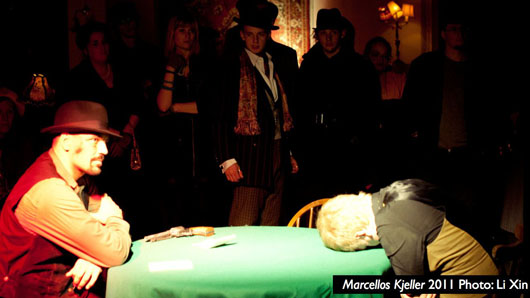

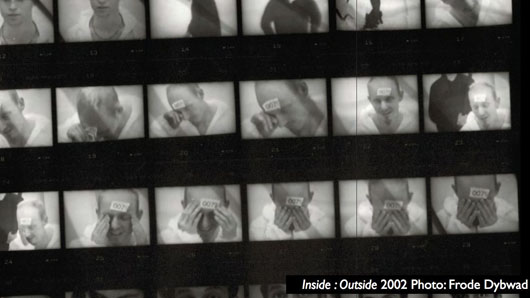

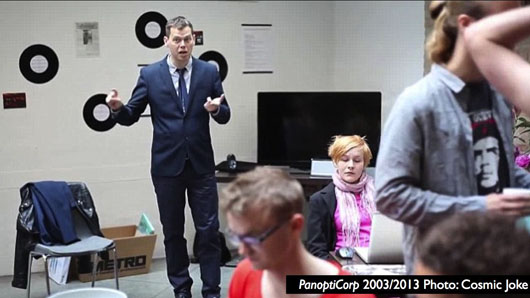
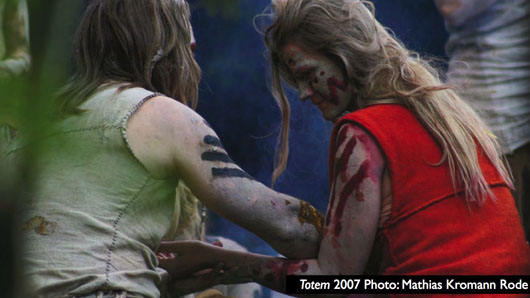
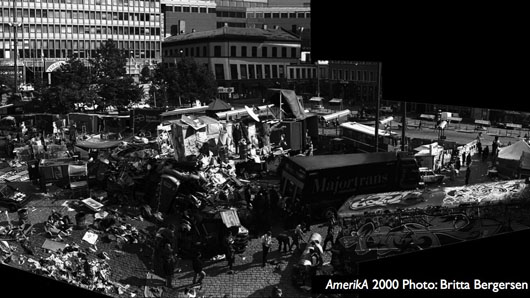


Was so enlightened to read this. You made it a bit clear how we can develop our work through larp. I would love to know more. Thank you,Martin